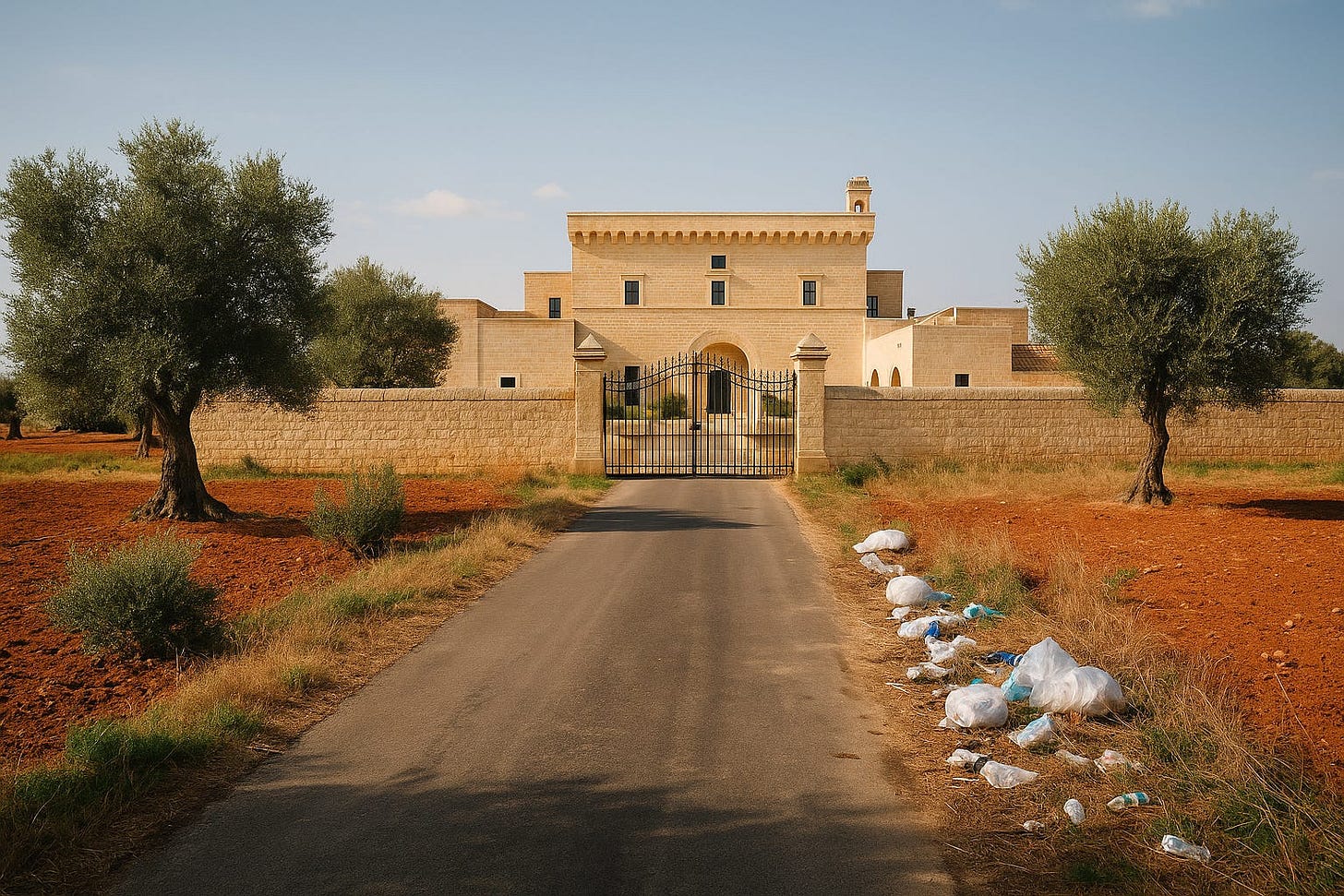Italy: Trash-Filled Roads Leading to Luxury Resorts.
A Contradiction That Says Too Much About Us.
Read the original version of Esco quando voglio #85 in Italian, here 👇🏻
I hate to say it, but it's an all-too-familiar scene: you enter a stunning tourist facility, maybe one of the most awarded, with magazine-cover suites and impeccable service… but to get there, you had to…




